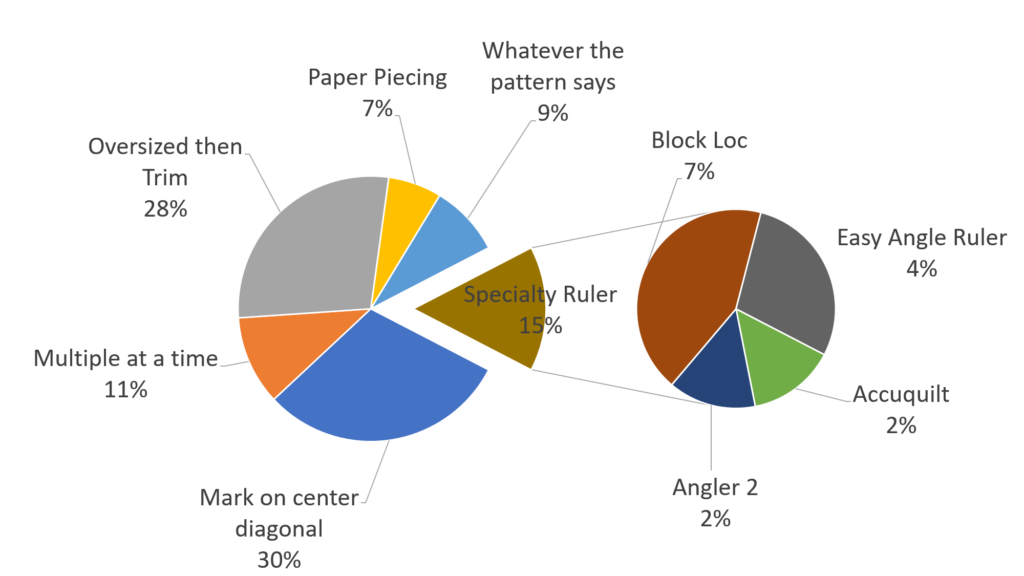Join us for a detailed discussion of the many ways to make half square triangles (including some charts with results from our earlier poll!) and the basics of making fabric postcards.
This episode is brought to you by Ink & Arrow Fabrics!
The quilt hanging behind us is the baby size version of our Emilio quilt pattern. Get the digital pattern at our shop and make your own version!
Tips and links for this episode:
- The tutorial for the hexagon pincushion caddy can be found at Penny’s Hands.
- Nancy Zieman’s retirement letter and her biography Seams Unlikely on Amazon
- Half Square Triangle tips
- Quilter’s Magic Wand
- E-Z Angle Ruler and Bonnie Hunter’s tutorial
- Triangles on a Roll (4″)
- Thangles (4″)
- Triangulations software
- Bloc-Loc rulers
- The Sewing with Nancy episode on making multiple HSTs at a time with precuts (go to the 2:00 mark or so)
- The Angler that goes on the bed of your sewing machine
- What it means to “spin your seams”
- The chart on HST preferences:

- Fabric postcards
- More inspiration and tutorials on fabric postcards from Patchwork Posse
- You would use this type of rubber stamp to make the postcard back.
- Today’s episode was brought to you by Ink & Arrow Fabrics, because fabric should be fun! Check out their Pixie Dots basics line!
- Thanks to our production partners 77peaches enterprises and Big Think Productions.
- Audio only versions of the show are available in the Hip to be a Square quilting podcast feed.
- The Stitch TV Show mugs are available from Lasting Impressions Atlanta!
- Our next Virtual Stitch-In is Friday October 13 at 7pm US Eastern.
- If you enjoyed it, help spread the word on your blog, or share on social media and tag us with #TheStitchTVShow!

